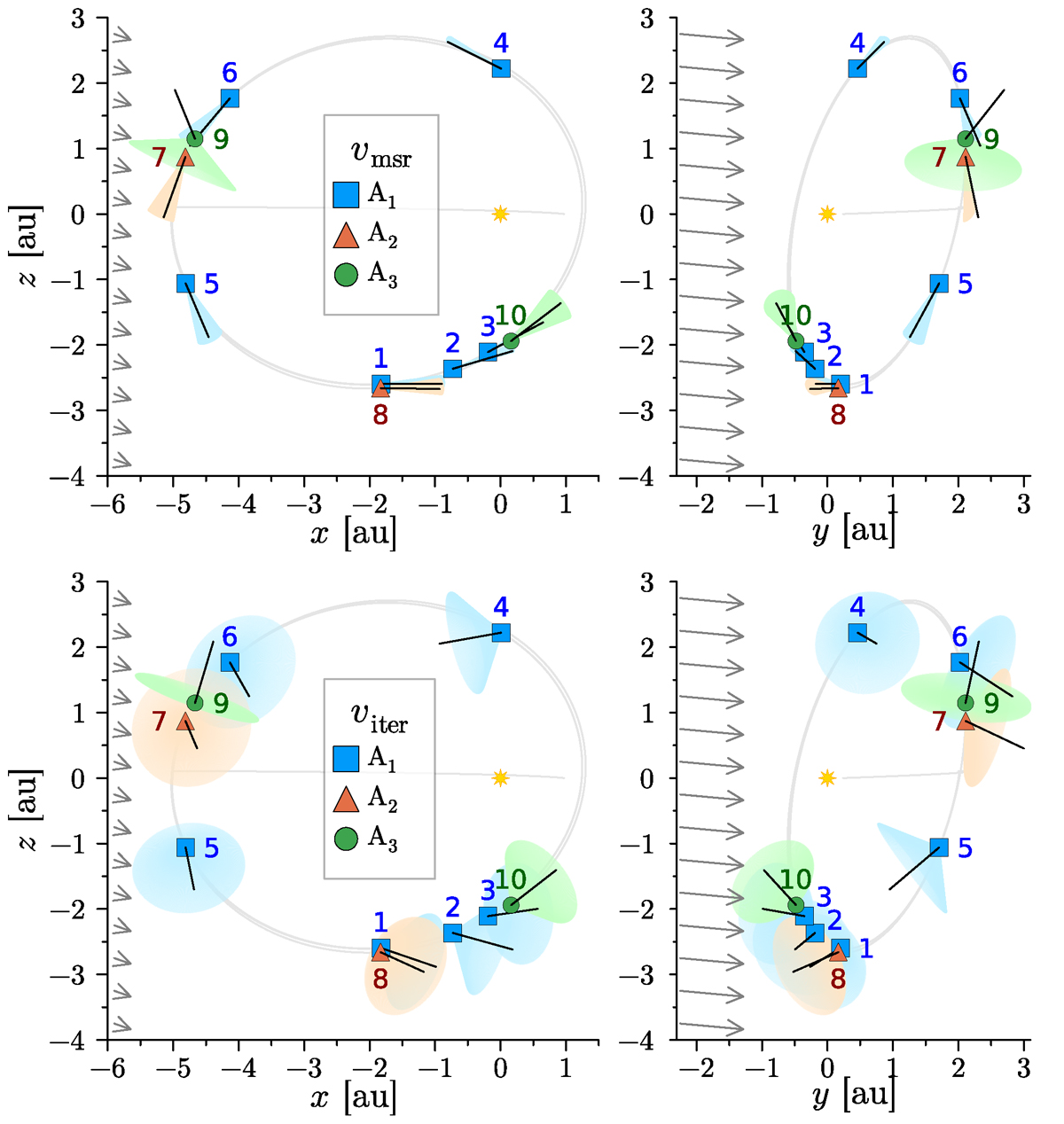Fig. 10.

Download original image
Ulysses’ orbital position and the detector’s boresight and cone of view at the times of the most massive particle impacts in the ecliptic xz- (left) and yz-plane (right). The detector boresight and its cone of view were Galilean-transformed from the spacecraft frame to the heliocentric frame, which distorts the cones of view. The Galilean transformation assumes that the dust particles’ relative velocity corresponds to the inverse boresight direction and either the measurement-derived impact speeds, vmsr (top), or the iteratively calculated impact speeds, viter (bottom). The ISD inflow is marked by grey arrows (see Fig. 3). The orbital positions at which the particles of Subset A impacted are indicated by blue squares, red triangles, and green circles for A1, 2, 3, respectively. The black lines point in the detector boresight, scaled identically in both panels. The coloured areas give the outer edge of the cone of view with an opening angle of ±70°, corresponding to the detector’s sensitivity without considering wall impacts. We note that the measurement-derived impact speeds are most likely spurious for the particles of A1, 2, and that the iteratively calculated relative speeds assume an ISD origin. Particles are numbered as in Fig. 9. The deviation of the boresight from the ISD inflow direction is tabulated in Table 2.
Current usage metrics show cumulative count of Article Views (full-text article views including HTML views, PDF and ePub downloads, according to the available data) and Abstracts Views on Vision4Press platform.
Data correspond to usage on the plateform after 2015. The current usage metrics is available 48-96 hours after online publication and is updated daily on week days.
Initial download of the metrics may take a while.


